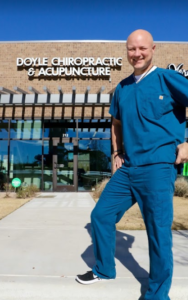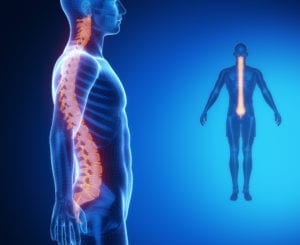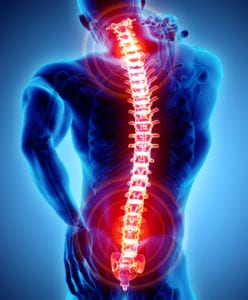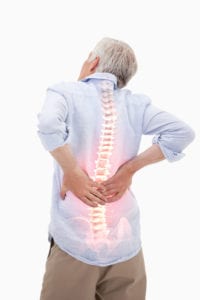
Do you suffer from frequent headaches? Are you confused by the different opinions about whether or not your headaches are coming from your neck?
It seems that most medical practitioners fall into one of two camps when discussing the role of the cervical spine (neck) in chronic head pain.
- Those who believe the neck is always the primary culprit in chronic head pain.
- Those who think the neck plays little to no role in a patient’s headache symptoms.
My name is Dr. Cody Doyle, and I can tell you, every day, at least one patient presents to my office complaining of recurrent headaches. And then, they ask the most common yet complicated question I get asked in my chiropractic practice.
“Could my neck be causing my headaches, and if so, what treatments are effective?”
As an evidence-based chiropractor with over twenty-three years of successfully treating patients with headache symptoms and an insatiable desire to learn everything I can to help my patients best, I believe I have the right answer.
My answer?
Maybe.
The “Gray Area” of Whether Your Headaches Are Coming From Your Neck
The conflicting opinions of medical practitioners can lead to a large degree of confusion and irritation for patients who experience frequent headaches.
One provider tells them their neck plays a significant role in their symptoms while another is seemingly dismissive of the role the neck plays in the generation of headache symptoms. Add to this confusion the well-meaning advice and anecdotal stories relayed by close friends and family members. The result of all this conflicting information is enough to send patients into a spiral of frustration, causing a headache on the spot.
That’s the last thing headache sufferers need.
If you experience frequent headaches, you don’t need confusion and frustration. You need answers. Because the truth is, some headaches come from the neck, and some do not.
What is important to know when determining if your headaches are coming from your neck?
As already stated, I am an evidence-based chiropractor.
What do I mean by an Evidenced-Based Chiropractor?
According to Wikipedia:
“An evidence-based practice (EBP) is any practice that relies on scientific evidence for guidance and decision-making.”
So, as an evidence-based practitioner treating headaches, I am primarily concerned with what research (evidence) says about the cervical spine and its role in driving the pain associated with headaches.
Of course, I also pay attention and listen to my patients when it comes to what treatments work for them. Science offers evidence and information, but I understand that what really matters is resolving your symptoms. Therefore, I will continually evaluate your unique progress and suggest changes in your treatment plan if your symptoms are not resolving.
But before we get to a treatment plan, I will perform a thorough examination, including medical history, current medications, x-rays, and physical exam.
During the physical exam, I utilize several techniques to help determine if your neck (cervical spine) is contributing to your head pain. For instance, I will put you through some maneuvers that attempt to reproduce your headache.
If we can determine that certain movements of your neck or palpation of specific structures in your neck reproduce your pain, it helps me understand the mechanism that could be involved in some or all of your head pain.
After a thorough history and physical examination, we should be able to have a pretty good idea of what role, if any, your neck plays in your head pain.
Your Headache Type Helps Determine if the Neck Is Involved
Before we begin a discussion about the neck and its role in headache symptoms, it will be helpful to discuss the types of headaches.
The International Classification of Headache Disorders, 3rd edition contains descriptions of many classifications and subclassifications of headache and head pain. However, for this discussion, we will focus only on two general categories of headache:
- Primary headache
- Secondary headache
According to the IHS Classification, a primary headache is a condition by itself. In other words, the headache does not occur as a result of some other external sources, such as medications, dehydration, or neck dysfunction. Examples include migraines, cluster headaches, and tension-type headaches.
A secondary headache is head pain that occurs as a result of another disorder that is known to cause a headache. Examples include head pain caused by bacterial meningitis, medication overuse, dehydration, or neck dysfunction.
A headache arising from dysfunction or abnormality in your neck would be a secondary headache.
It is also helpful to understand that some patients may have a primary type of headache (i.e., tension-type headache) that is exacerbated (or made worse) by dysfunction in the neck.
The real questions to ask are:
- What does the research (evidence) say about neck dysfunction that causes a headache?
- How will we know if you, indeed, have head pain related to the neck?
The second question can have layers. For instance, if you have primary headaches, do you have a neck issue that exacerbates it? If you experience secondary headaches, are they related to the neck or something else?
How often do headaches come from the neck?
If your head pain is related to dysfunction or misalignment of the cervical spine (neck), you have what is called cervicogenic headaches.
When you consider all the types of head pain, cervicogenic headaches are relatively rare.
In fact, an article in the Journal of Manual & Manipulative Therapy1 reports a prevalence rate of approximately 2.5 percent in the general population.
However, it is also important to note that the prevalence of cervicogenic headache climbs to as high as 53 percent in patients who have suffered an injury to their cervical spine2.
What treatments are available if my neck is contributing to my head pain?
As an evidence-based chiropractor, I am primarily concerned with what the research says concerning effective treatment and the frequency of that treatment. Based on this research and your unique symptoms and physical examination, I will work with you to formulate a treatment plan that works best for you.
When it comes to effective treatment, Dunning, et al3 performed a study on a group of patients suffering from cervicogenic headaches. They compared the effects of either combined cervical and thoracic manipulation (chiropractic care) or mobilization and exercise (physical therapy). They found:
“The results of the current study demonstrated that patients with cervicogenic headache who received cervical and thoracic manipulation experienced significantly greater reductions in headache intensity, disability, headache frequency, headache duration, and medication intake as compared to the group that received mobilization and exercise; furthermore, the effects were maintained at three months follow-up.”
To summarize, the above study found that patients treated with spinal manipulation (chiropractic care) did significantly better than those who received only physical therapy and exercise.
The study goes on to discuss the proposed mechanism for superior results achieved through chiropractic manipulation versus physical therapy. If you are interested, you can search the article referenced below and read further.
How many treatments will I need if my headaches are coming from my neck?
Determining the number of visits a patient may need is always challenging. Again, we look at what the evidence shows regarding the dosage of spinal manipulation in conditions such as this.
Haas and colleagues looked at the question of appropriate dosage for treating cervicogenic headache. They published their findings in The Spine Journal4. In this impressive study, they randomized participants to four different dose levels of chiropractic manipulation: 0, 6, 12, or 18 sessions. They treated each patient three times per week for six weeks, and for those receiving less than 18 sessions of spinal manipulation therapy (SMT), a focused, light-massage was performed as a control for the sessions when manipulation was not assigned.
The authors found:
“There was a linear dose-response relationship between SMT visits and days with cervicogenic headache (CGH) that was durable to 52 weeks after the start of care. For the highest and most effective dose of 18 SMT visits, CGH days were reduced by about half, and about three more days per month than for the light-massage control.”
To summarize, the patients given 12 and 18 spinal manipulation treatments experienced the most improvement. Their improvement lasted 52 weeks (one year) after the start of care.
There are many variables among patients to consider. The degree of degeneration present in the neck, limitations in range of motion, soft tissue abnormalities, etc.. However, most patients respond favorably and achieve lasting pain relief with somewhere between 12 and 18 chiropractic visits.
Do you suffer from headaches and wonder if your neck plays a role?
If you have frequent headaches, your neck could be involved. Especially if you have experienced an injury to your cervical spine. And studies prove chiropractic spinal manipulations can offer you the relief you desire.
Is it time for you to find relief?
Do you have any questions? Would you like to find out if your neck may be causing your headaches? Call (817) 767-5430 today. One of our friendly team members would love to answer your questions and schedule a consultation.
References
- Racicki, S., Gerwin, S., DiClaudio, S., Reinmann, S., & Donaldson, M. (2013). Conservative physical therapy management for the treatment of cervicogenic headache: a systematic review.Journal of Manual & Manipulative Therapy, 21(2), 113–124. doi:10.1179/2042618612Y.0000000025
- Bogduk, N., & Govind, J. (2009). Cervicogenic headache: an assessment of the evidence on clinical diagnosis, invasive tests, and treatment. Lancet neurology, 8(10), 959–968. doi:10.1016/S1474-4422(09)70209-1
3.Dunning, J. R., Butts, R., Mourad, F., Young, I., Fernández-de-las-Peñas, C., Hagins, M., et al. (2016). Upper cervical and upper thoracic manipulation versus mobilization and exercise in patients with cervicogenic headache: a multi-center randomized clinical trial. BMC Musculoskelet Disord, 17, 64. http://doi.org/10.1186/s12891-016-0912-3
- Haas, M., Bronfort, G., Evans, R., Schulz, C., Vavrek, D., Takaki, L., et al. (2018). Dose-response and efficacy of spinal manipulation for care of cervicogenic headache: a dual-center randomized controlled trial. The Spine Journal, 18(10), 1741–1754. http://doi.org/10.1016/j.spinee.2018.02.019









